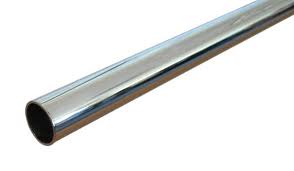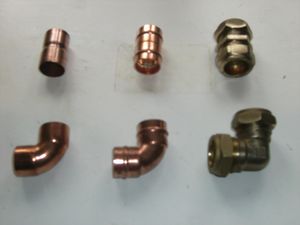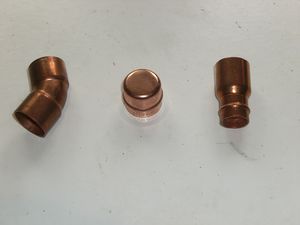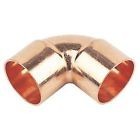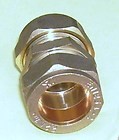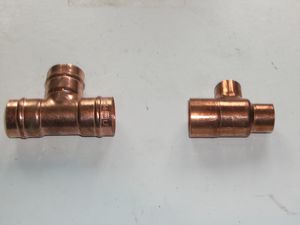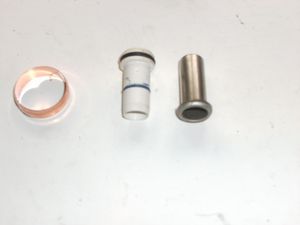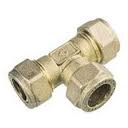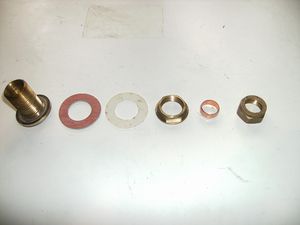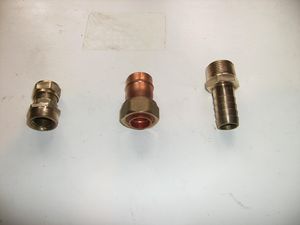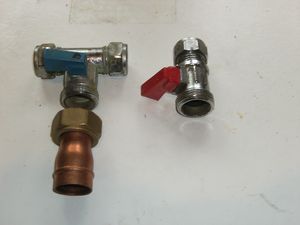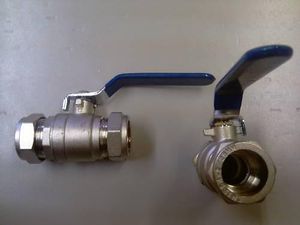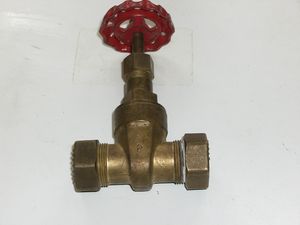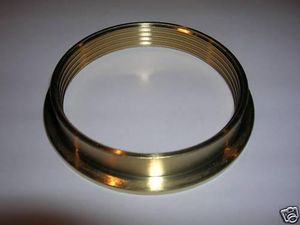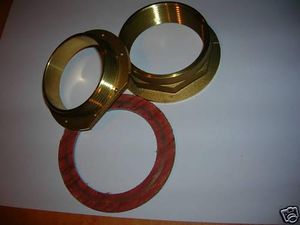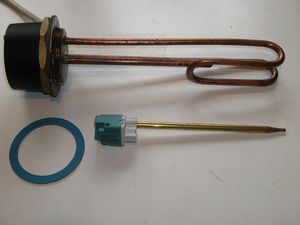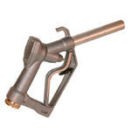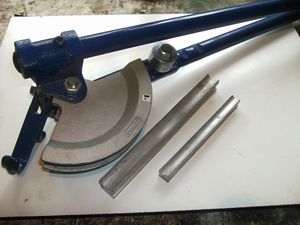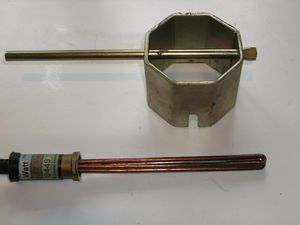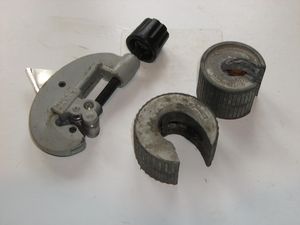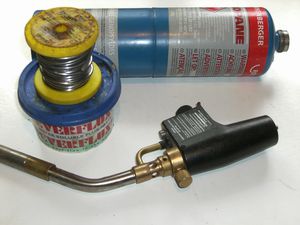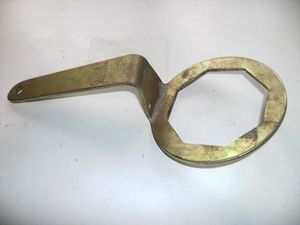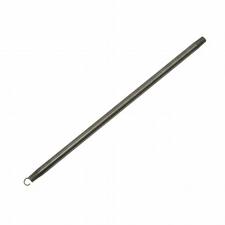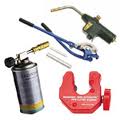Plumbing fittings
A brief discription of the fittings and tools used in making a processor or filter set up
Contents
Pipe
Available in lengths of upto 6 metres and the 8 and 10 in rolls upto 50 metres. Diameters include 8,10,15,22 and 28 mm it can be also obtained chrome plated
- Click pictures to enlarge
Fittings
Fittings are used in pipe and plumbing systems to connect straight pipe or tubing sections, to adapt to different sizes or shapes, and for other purposes There are basically two types of copper fittings,compression and capillary A compression fitting comprises of the body an olive and the nut,the nut is threaded onto the body of the fitting and tightened to make a leakproof connection. Fittings are typically made of brass There are two types of capillary - end feed/copper sweat and yorkshire/solder ring/integral ring joint
- Click pictures to enlarge
- Click pictures to enlarge
Elbow/90/Street elbow
An elbow is a pipe fitting installed between two lengths of pipe or tubing to allow a change of direction, usually a 90° or 45° angle, though 22.5° elbows are also made. Most elbows are available in short radius or long radius types.
Coupler/Straight connector
A coupling connects two pipes to each other. If the size of the pipe is not the same , the fitting may be called a reducing coupling or reducer.
Reducer
A reducer allows for a change in pipe size
- Click pictures to enlarge
- Click pictures to enlarge
Tee
A tee is used to either join or split a flow. Most are tees with the same inlet and outlet sizes, but reducing/Unequal tees are available as well.
- Click pictures to enlarge
Tank connector
Joins pipes to cylinders and cisterns or in our case 45 gal drums Do not use the supplied washers with biodiesel as they will deteriorate,replace them with nylon or fibre etc
- Click pictures to enlarge
Valves
- Click pictures to enlarge
Ball valves/Lever valve
A ball valve is a valve with a spherical disc, the part of the valve which controls the flow through it. The sphere has a hole, or port, through the middle so that when the port is in line with both ends of the valve, flow will occur. When the valve is closed, the hole is perpendicular to the ends of the valve, and flow is blocked. The handle or lever will be inline with the port position letting you "see" the valve's position.
Gate valve
A gate valve is a valve that opens by lifting a round or rectangular gate/wedge out of the path of the fluid.
Other
- Click pictures to enlarge
- Click pictures to enlarge
- Click pictures to enlarge
Dispensing nozzle
Check that the O rings/seals are bio compatable
Filter housing
Normally either 3/4" or 1" BSP threads
If you use PTFE tape when fitting an immersion heater try and get the gas type as it is thicker
Tools
- Click pictures to enlarge
- Click pictures to enlarge
- Click pictures to enlarge
- Click pictures to enlarge
Using a pipe bender
Hold the pipe against the radiused former,then insert the straight former to support the pipe then pull the levers together
Various
Hole size required
Mechanical flange 65mm
22mm Tank connector 28mm
15mm Tank connector 22mm
You can file or drill out the "stop" on tank connectors which will allow the pipe to pass through
Most pumps ie TAM105,s have a 1" BSP parellel thread so normally you would need 2 of 22mm compression x 1" BSP for your processor
2 1/4" mild steel weldable sockets are available from a vegetableoildiesel forum member and a stainless steel version is obtainable commercially
For a water washing spray nozzle the brass fitting on a cheap pump up sprayer is ideal
Pockets
You can make a pocket for a thermometer or thermocoupler by filing out the stop on a 15mm tank connector,pass a short piece of 15mm pipe through this and solder on a 15-10mm or 15-8mm reducer then solder in the required length of 8 or 10mm pipe and solder on an end cap
Fitting a tank connector in a tight head drum
What you need is the tank connector a drill the same size as the threads on the connector 2 nylon washers for each tank connector a length of string and a wire coat hanger.
How to do it, straighten the coat hanger then grip it with pliers 1/2" from the end and bend it around the plies to make a hook, measure the threads on the tank connector and drill the hole,the threads want to be a tight fit to the hole, tie the nut to the string and drop the nut through the filler hole,keep hold of the string so that you are just holding it off the bottom of the tank put the hook through the hole you have just drilled and hook the string and pull it through the hole, tie it of somewhere so that it wont get pulled back into the tank. Next the other end of the string, put 1 nylon washer on to the tank connector up to the flange - you can put silicon sealer on the washer if you want, push the string through the tank connector so that when you pull it into the tank the threaded end enters first, from the flange end make a loop in the string then tie the nut from the tank connector onto the string so that you can pull the tank connector through the hole you drilled, you also want to be able to recover the nut so dont make a quick release knot when you get the threads through the hole pull it up tight so that the flange is against the inside of the tank, then you can recover the string with the 2 nuts on it, then fit another nylon washer and silicon then the check nut and pull up tight put the olive and nut on and you are done.
Courtesy of JIM.M
See also
Use if there are similar pages in the wiki, if not delete.
- Link within this wiki here
- Link within this wiki here
- Link within this wiki here
Originator to sign and date here by using 4 "squiggle marks"
<nowiki> sets the main category.
Select one from the following, and delete the others:

